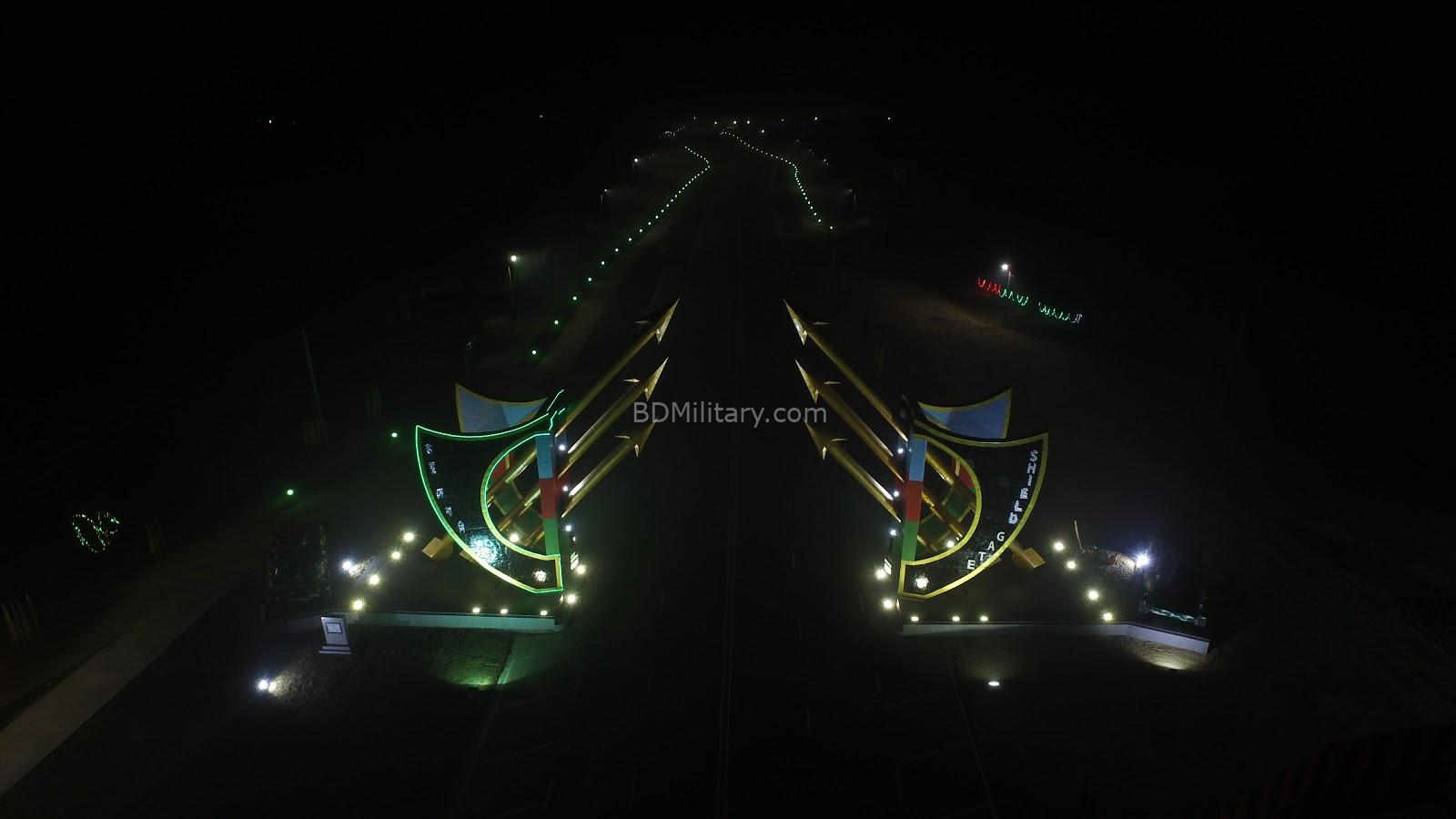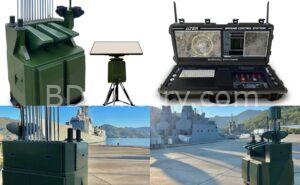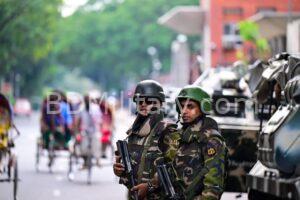In recent years, Bangladesh has significantly strengthened its military posture along its border with Myanmar, turning the south-eastern region into a strategic hub for national defence. Cox’s Bazar, historically known for its scenic coastline and tourism, has now become central to the Bangladesh Armed Forces’ operational planning. With sprawling army cantonments, South Asia’s largest submarine base, and an advanced airbase nearing completion, Bangladesh has signalled a clear message: any threat to its sovereignty or citizens will be met with decisive force.
This article explores the strategic rationale behind Bangladesh’s defence posture, details the infrastructure that supports its operational readiness, examines troop deployments, and analyses the regional implications of its growing deterrence capability.
Strategic Context: Myanmar’s Internal Instability
Bangladesh shares a 271-kilometre border with Myanmar, a frontier that has historically been vulnerable to spill over from internal conflicts in Rakhine State. The region has witnessed decades of strife involving the Myanmar military and various ethnic armed groups. Most recently, the Arakan Army (AA), an ethnic armed group, has seized control of the majority of townships in Rakhine, including Maungdaw, directly bordering Bangladesh.
This instability has posed multiple challenges for Dhaka: cross-border attacks, illegal trafficking, refugee influxes, and tensions arising from the Rohingya crisis. Notably, past encounters between Bangladesh forces and the Myanmar military have highlighted the latter’s operational weaknesses, with the Bangladesh Armed Forces consistently demonstrating tactical superiority in border engagements. These historical lessons inform the current emphasis on readiness and deterrence.
The evolving security landscape necessitates a robust defence infrastructure capable of responding rapidly to both conventional and unconventional threats. Bangladesh’s strategic approach combines intelligence, force projection, and infrastructure development to prevent escalation while ensuring civilian safety along the border.
Historical Encounters and Lessons Learned
Bangladesh’s strategic planning is informed by past border incidents. In multiple instances, Myanmar’s military incursions or harassment of Bangladeshi forces and civilians were met with decisive countermeasures. For example:
- 1991–1992 Border Clashes: Myanmar forces crossed into Cox’s Bazar in pursuit of ethnic insurgents, only to be repelled by well-coordinated Bangladeshi defensive operations.
- 2009–2010 Skirmishes: During escalations in the Naf River area, Bangladesh successfully intercepted cross-border attacks, highlighting its superior knowledge of terrain and rapid deployment capabilities.
These encounters established the principle that operational readiness, combined with robust infrastructure, serves as an effective deterrent against potential misadventures. Lessons from these events are reflected in modern cantonment design, training, and deployment strategies.
Ramu Cantonment: The Heart of Southern Defence
At the core of Bangladesh’s south-eastern defence is the Ramu Cantonment in Cox’s Bazar. Serving as the headquarters of the 10th Infantry Division, the cantonment spans thousands of acres and hosts multiple formations, including artillery brigades and infantry divisions.
Ramu Cantonment is more than a military base—it is a full-spectrum security hub. Its strategic location allows forces to respond rapidly to incidents along the Myanmar border while supporting sustained military operations. Critical infrastructure within the cantonment includes a Combined Military Hospital, engineering facilities, and command-and-control centres.
The cantonment is designed with modern warfare in mind. A major road doubles as a wartime airstrip, and the base contains underground complexes, advanced communication networks, and large arrays of military hardware, including tanks, heavy artillery, mechanised infantry capabilities, and air defence systems. Its comprehensive design ensures that Bangladesh can maintain a continuous and coordinated defensive posture in the region.
Beyond traditional defence, the cantonment also addresses asymmetric threats. It plays a vital role in curbing smuggling, drug trafficking, and illegal migration along the border, and it protects critical civil infrastructure in Cox’s Bazar.
BNS Pekua: South Asia’s Largest Submarine Base
Bangladesh’s strategic posture extends to maritime security. Commissioned in 2023, BNS Pekua, located in Cox’s Bazar, is South Asia’s largest submarine base. Its establishment has transformed Bangladesh’s naval capabilities, enabling sustained underwater operations and enhancing deterrence along the Bay of Bengal.
The base facilitates monitoring of sea lanes, rapid deployment of underwater assets, and protection of critical maritime trade routes. Submarines, with their stealth and lethality, provide Bangladesh with a unique defensive advantage. Their presence also complements land and air defences, ensuring a multi-layered security framework along the south-eastern frontier.
Cox’s Bazar Airbase: Air Defence and Rapid Response
Air power is another crucial component of Bangladesh’s strategic posture. The new airbase in Cox’s Bazar, nearing completion, is equipped with advanced fighter jets and multi-layered air defence systems. This facility enables rapid air deployment along the Myanmar border, providing both surveillance and response capabilities.
The airbase will monitor airspace, intercept potential threats, and support both land and maritime operations. Its multi-layered defence architecture ensures resilience against aerial incursions, reinforcing Bangladesh’s deterrent posture.
Operational Readiness and Force Projection
Bangladesh now has the capability to mobilise up to 100,000 troops along the Myanmar border at short notice. This force projection ensures that any incursion, threat, or humanitarian emergency can be met with a coordinated, decisive response.
Recent incidents underscore the necessity of this readiness: cross-border attacks on fishermen in the Naf River, abductions, and small-scale skirmishes with ethnic armed groups have demonstrated the importance of positioning and infrastructure. The integration of land, sea, and air assets allows for rapid decision-making, flexible response, and sustained operational endurance.
Exercises and Modernisation
Bangladesh has conducted multiple large-scale military exercises in Cox’s Bazar to validate its readiness. These exercises involve:
- Integrated land-air-naval operations to secure border zones
- Amphibious drills coordinated with naval assets from naval bases in the Chattogram belt
- Anti-smuggling and counter-insurgency operations
Modernisation programmes under Forces Goal 2030 have enhanced artillery, mechanised infantry, air defence systems, and communications networks. These initiatives provide Bangladesh with the capability to sustain high-tempo operations and ensure operational superiority over potential aggressors.
Regional Implications
Bangladesh’s military build-up has broader regional consequences. Myanmar’s internal conflicts have drawn international attention, and external actors, including the United States, have engaged with ethnic armed groups such as the Arakan Army.
For Bangladesh, the strategy is clear: maintain stability along its borders without triggering unnecessary escalation. Its approach combines strong deterrence, diplomatic engagement, and situational awareness. By demonstrating both capability and resolve, Bangladesh ensures that any threat to its sovereignty or citizens has tangible consequences.
This posture also contributes to regional stability. Neighbouring countries and international partners recognise that Bangladesh’s defensive preparations provide a stabilising influence along a historically volatile frontier.
Conclusion
Investments in Ramu Cantonment, BNS Pekua, and the new airbase in Cox’s Bazar reflect a modern, multi-layered approach to national defence. These developments enhance Bangladesh’s operational readiness, provide comprehensive land, sea, and air deterrence, and signal to regional actors that the country is serious about protecting its sovereignty and citizens.
Bangladesh’s strategic posture is both proactive and measured: it combines infrastructure, technology, and human capability to maintain peace and security along one of South Asia’s most sensitive borders. With these capabilities in place, Bangladesh has established a deterrence framework likely to influence regional security dynamics for years to come.

Khaled Ahmed is a seasoned former intelligence analyst and military expert from the Netherlands, bringing over 15 years of specialised experience in operational intelligence, threat analysis, and strategic defence planning. Having served in high-level, classified roles within Dutch military intelligence, he possesses rare expertise in European security architecture, NATO doctrine, and asymmetric warfare. Khaled’s deep operational insight and international perspective enable him to deliver precision-driven intelligence analysis and forward-looking strategic forecasts. A trusted contributor to high-level risk assessments and security briefings, he offers readers clarity on complex defence and security challenges. Khaled leads the National Security and Fact Analysis sections at BDMilitary. He holds a Master’s degree in International Relations from the University of Groningen, The Netherlands, and is fluent in Dutch, French, and Arabic — combining linguistic dexterity with operational expertise to analyse security issues across cultures and regions.


